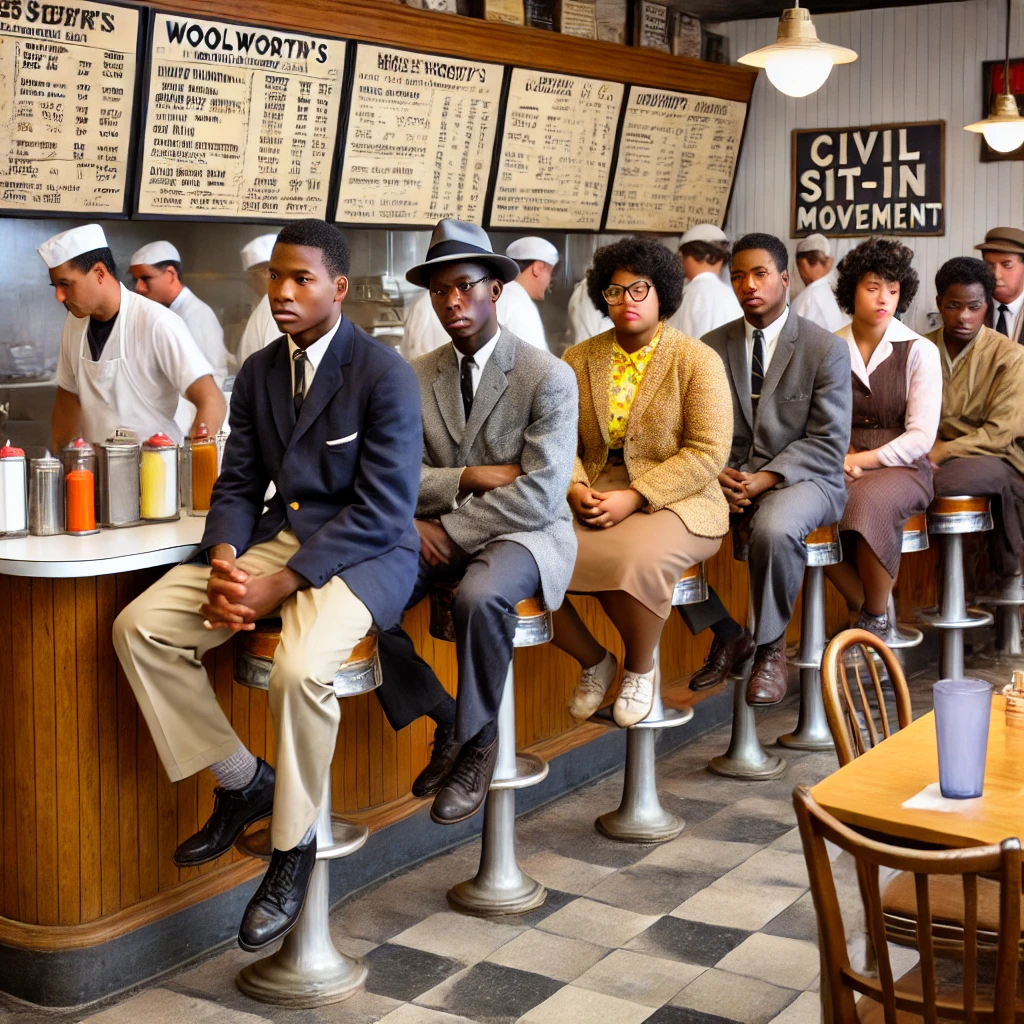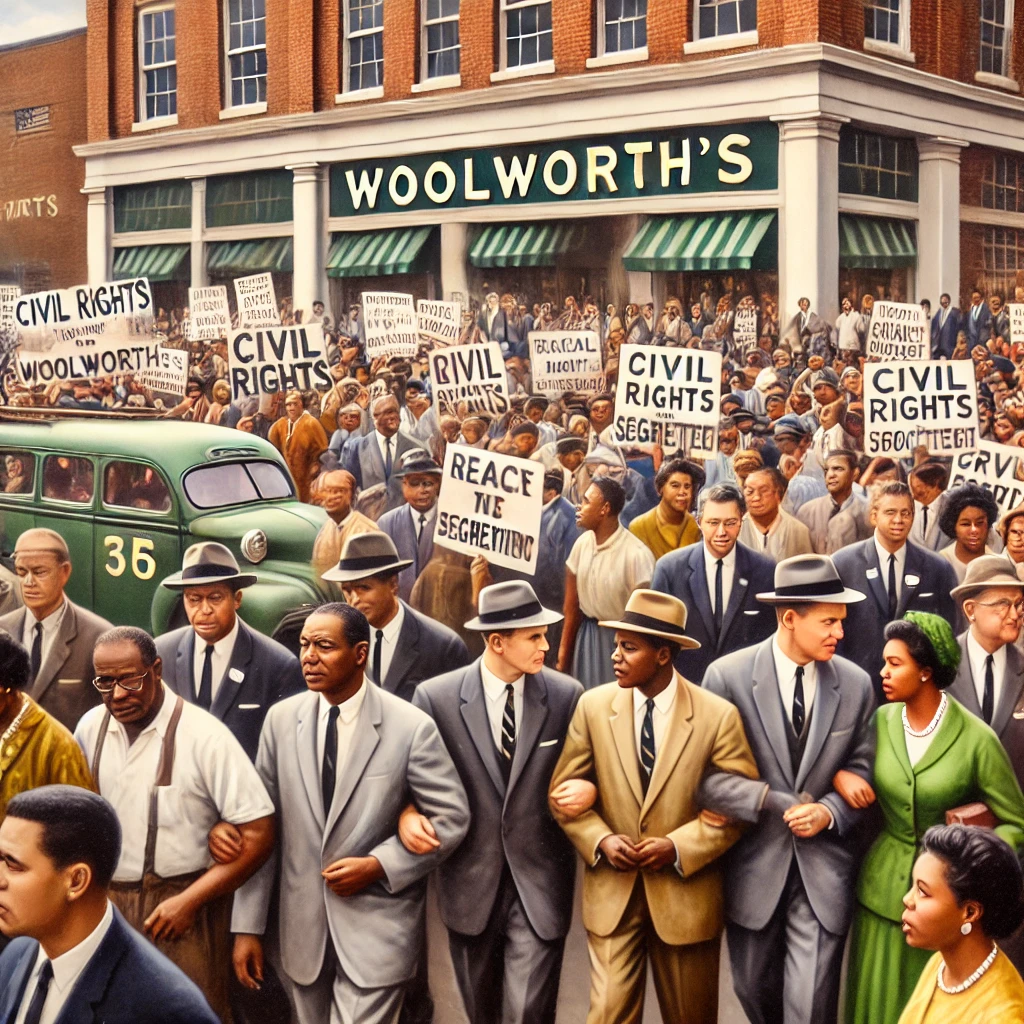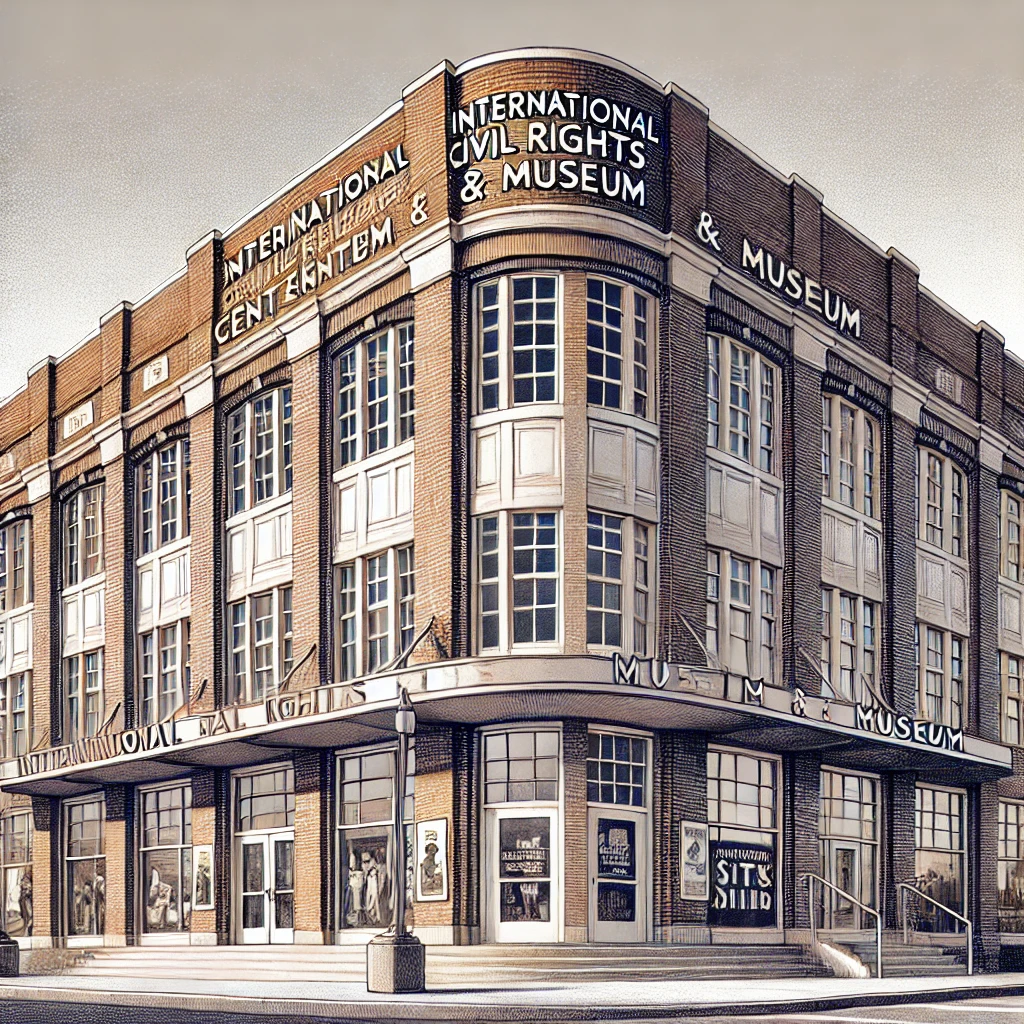On this day in 1960, the Greensboro sit-in began as four African American college students staged a peaceful protest at a segregated Woolworth’s lunch counter, igniting a wave of similar protests against racial segregation. Ezell Blair Jr. (later Jibreel Khazan), Franklin McCain, Joseph McNeil, and David Richmond, all freshmen at North Carolina A&T State University, walked into Woolworth’s in downtown Greensboro, North Carolina, and took a stand against injustice by simply sitting down. Their act of defiance challenged the racist policies of the time and became a powerful symbol of the Civil Rights Movement.

The Power of Nonviolent Resistance
The Greensboro Four were inspired by the teachings of Mahatma Gandhi and the nonviolent principles advocated by Dr. Martin Luther King Jr. They entered the store, sat at the whites-only lunch counter, and requested service, knowing they would be denied. Instead of reacting with anger or violence, they remained seated in peaceful protest. Store employees ignored them, and the manager closed the counter early, but the students refused to back down. They returned the following day, this time with more supporters.
As news of their protest spread, more students across Greensboro joined in, and within weeks, similar sit-ins were organized in cities across the South. These demonstrations sent a clear message: segregation would no longer be tolerated. Despite harassment, arrests, and threats of violence, the protesters remained committed to their cause, proving the effectiveness of nonviolent resistance in the fight for equality.
The Movement Gains Momentum

The success of the Greensboro sit-in led to the formation of the Student Nonviolent Coordinating Committee (SNCC), a major force in the Civil Rights Movement. SNCC played a key role in organizing future protests, including Freedom Rides and voter registration drives. The sit-ins also pressured business owners to desegregate their establishments, as many stores faced economic losses due to boycotts and negative publicity.
By the summer of 1960, sit-ins had taken place in more than 55 cities across 13 states, involving thousands of young activists. Their persistence paid off when, on July 25, 1960, the Greensboro Woolworth’s officially desegregated its lunch counter. This victory demonstrated that collective action could bring about real change, even in the face of widespread opposition.
A Legacy That Lives On

The Greensboro sit-in was a pivotal moment in American history, proving that everyday citizens, particularly young people, had the power to challenge injustice. The courage of the Greensboro Four continues to inspire activists fighting for racial and social justice today. Their actions helped pave the way for the Civil Rights Act of 1964, which outlawed segregation in public places and prohibited racial discrimination.
Today, the original Woolworth’s building is home to the International Civil Rights Center & Museum, ensuring that the legacy of the sit-in lives on. More than six decades later, their story serves as a reminder that change often begins with a single act of courage. From the Black Lives Matter movement to student-led protests for equality, the spirit of the Greensboro sit-in remains alive, proving that peaceful resistance can still shape the future.
